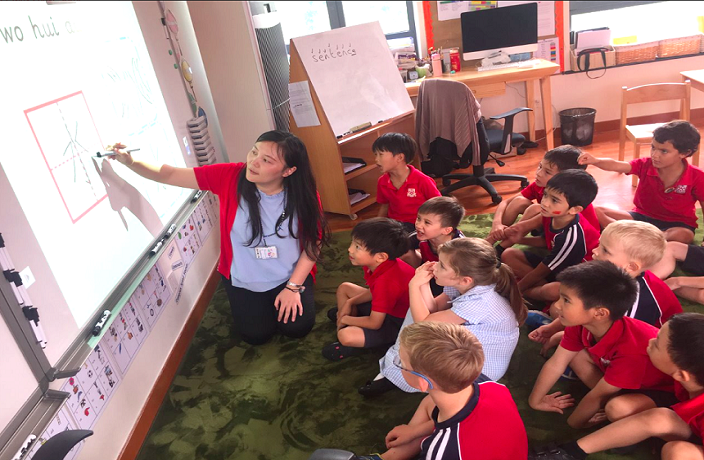We all know the importance of learning Mandarin as part of the curriculum, but what are some other ways Chinese culture can come to life at school?
We posed this question to Shanghai teachers to hear about their experiences connecting students with Chinese culture. They have come back with stories of trips outside the classroom, celebrating significant cultural events and activities that teach students about Chinese history. These efforts provide the children a deeper understanding and appreciation for the country in which they live.
So, as the school year continues and children come together in their multicultural classrooms, let's hear from Tony Pickhaver, who is the Assistant Head of Key Stage One at DUCKS, Dulwich College Shanghai Pudong.
 For any international school, being respectfully aware of your surroundings and community provides a rich source of inspiration. It opens up the possibilities for developing intercultural understanding and helps children to become 'world-wise.' Here at DUCKS, we are proud to celebrate our Mandarin language learning and what we do to develop our understanding of Chinese culture.
For any international school, being respectfully aware of your surroundings and community provides a rich source of inspiration. It opens up the possibilities for developing intercultural understanding and helps children to become 'world-wise.' Here at DUCKS, we are proud to celebrate our Mandarin language learning and what we do to develop our understanding of Chinese culture.
Engaging Teaching Methods
With our Dual Language approach, we immerse children in both English and Mandarin throughout Early Years and into Key Stage One. To help us keep a love of books and reading alive, we continually add new English and Mandarin books to our library. Children enjoy exploring a range of traditional Chinese stories in English, and classic tales from the West are also read in Mandarin, allowing for themes, vocabulary and a variety of perspectives to be shared. Expatriate teachers can often be seen learning new characters and phrases in Mandarin alongside children.
Cultural Immersion
Our environments contain a variety of culturally-appropriate stimuli, wherever possible. In Early Years, children enjoy dressing up in traditional Chinese clothing, performing tea ceremonies and using Chinese utensils in their role-play kitchens with steam bun trays, chopsticks and napkins. Many classrooms also have intricately carved artifacts to generate curiosity and discussion.

Image via Dulwich College Shanghai Pudong
Celebrating Occasions
Celebrating Chinese festivals, such as the Mid-Autumn Festival, provides an excellent opportunity to share well-known Chinese stories or poems with children, and to discuss the symbolism of these ancient festivals. Parents and grandparents in our community have been an excellent source of knowledge and experience, coming into classes to share stories, talk about growing up in 'old' Shanghai and cooking batches of tasty dumplings with the class. The Lunar New Year is a big celebration for us.
Traditional dancers perform, and our teachers often take part in acting out small scenes of a play like The Great Race, featuring the animals of the zodiac. Our Dual Language Teachers lead art and craft activities with children, such as constructing paper lanterns, creating plum blossom pictures and teaching how to write 福 (good luck) in Chinese calligraphy.

Image via Dulwich College Shanghai Pudong
Bridging the Gap
We try to forge new links with the English National Curriculum as often as possible. Deconstructed role-play areas can be turned into a variety of local institutions, from a noodle restaurant with English and Mandarin menus to a banking ATM that dispenses handmade RMB notes. In a Year 2 topic looking at explorers, children have learned about the adventures of Zheng He and taken a trip to the Shanghai Maritime Museum. Here they explore this famous general's travels by sea and climb aboard a Ming Dynasty merchant junk boat.
Imaginative, dedicated staff and a wealth of creative ideas from adults and children help to bring East and West together in the classrooms at Dulwich College Shanghai Pudong.
[Cover image via Dulwich College Shanghai Pudong; Profile image via Tony Pickhaver]
Tony Pickhaver is the Assistant Head of Key Stage One at DUCKS, Dulwich College Shanghai Pudong. He has worked at DUCKS for five years and continues to enjoy learning more about Chinese culture and the Mandarin language.


















